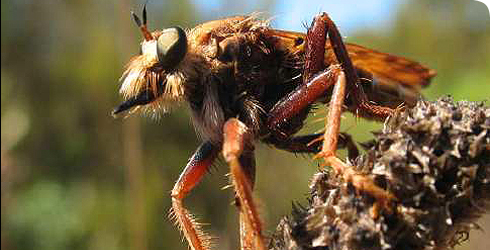Distribution and habitat
The hornet robber fly has been found only in southern England and Wales in the UK.
In Britain it was recorded from 142 (post 1970), 123 (post 1980) and 101 (post 1990) 10km squares (Smith 2000).
Asilus crabroniformis is a local species, rarely being reported in large numbers (Stubbs and Drake 2001). Colonies vary in numbers of adults per year making colony population sizes difficult to determine.
Habitat
Adult
The hornet robber fly is a species of open, unimproved or semi-improved pasture, heathlands, dunes and occasionally wide forestry roads.
Larvae
There is still considerable ongoing research into the larvae habitats and food preferences. The larvae are associated with surface-dry dung, with only cattle and rabbit dung being chosen (Pinchen et al 1998).
The eggs are laid in or beneath this dung but the larvae are thought to be free living in the surrounding soil.
Toolbox
Follow the Curator of Diptera's blog

What happens behind the scenes in the Museum's Life Sciences Department? Curator Erica McAlister has about 30,000 species of fly to look after, and fieldwork trips at home and abroad. Her life is never dull!
Follow the blog